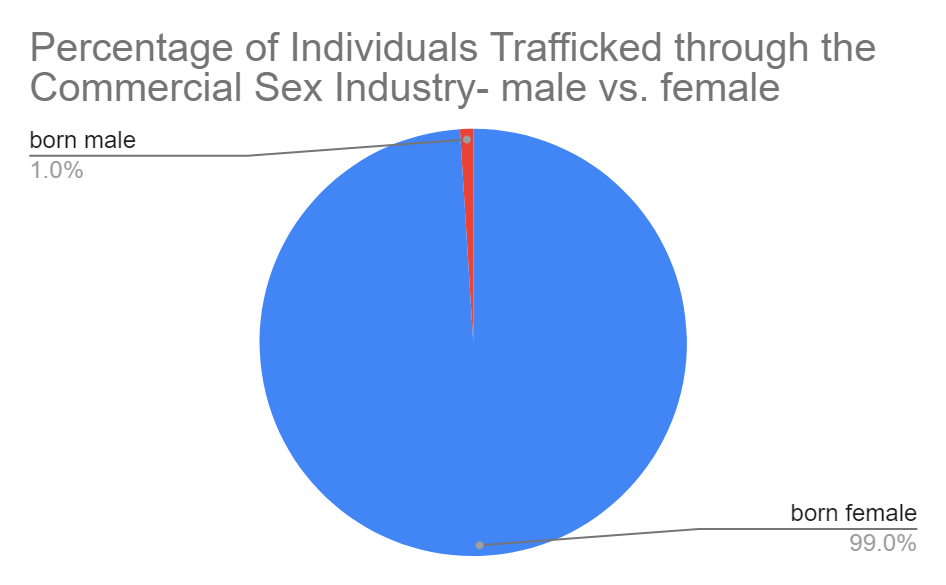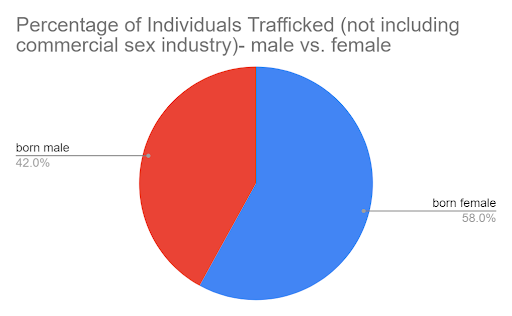How does sex trafficking impact women?
Dressember Reading Day #10
Every day during the month of December, we’re answering common questions and breaking down different aspects of human trafficking on our blog and Instagram. Join us in raising awareness about the injustice of human trafficking by sharing, donating, or joining the Dressember campaign (it’s not too late!).
According to the Global Estimates of Modern Day Slavery by the International Labor Organization (ILO), women and girls make up 99% of victims in the commercial sex industry, 58% of victims in the human trafficking industry (excluding the commercial sex industry), and 71% of victims in the human trafficking industry as a whole (including the commercial sex industry).
Note: In this blog I refer to “male” and “female” as the biological sex assigned at birth. If you would like to learn more about the difference between biological sex and gender identity, Science ABC does a good job explaining it!



Why is the percentage so overwhelmingly high for women?
The answer to this question is somewhat simple: demand. Internationally, and within the United States, pimps and traffickers prey on women who have prior jail sentences, feel loneliness or despair, or are looking for help. They take advantage of vulnerability.
The Guardian article, “Human life is more expendable': why slavery has never made more money,” asserts that the sex trafficking industry accounts for 5% of the overall human trafficking industry. This means that 5% of human trafficking victims are involved in sex trafficking. The article also states that the sex trafficking industry is disproportionately profitable, accounting for 50% of all money made through human trafficking. Within the sex trafficking industry, the intense demand allows pimps and traffickers the ability to sell women, girls, and individuals multiple times a day. Every time an individual is sold, the trafficker gains money. This encourages the trafficker to continue to sell and victimize individuals.
Economist Siddharth Kara stated: “the return on investment for sex trafficking is around 1,000% compared with much lower returns in exploitation for construction, agriculture or mining. The immense profitability of sex trafficking is…driven by the minimal expense associated with acquiring victims and the fact that the victim can be sold up to 20 times a day, generating tens of thousands, if not hundreds of thousands, of dollars in profit per victim.” This means that a trafficker can make thousands of dollars through the sale of just one individual. This enables these women to be continuously and harshly victimized.
What can I do to help?
By raising awareness through organizations like Dressember you are working to advocate for vulnerable populations and declare that it is not acceptable to victimize women or joke about female victimization. In addition, when you raise money, that money goes directly to anti-human-trafficking organizations around the world. This money enables organizations to rescue and support individuals in human trafficking situations.
Further Reading:
The face of human trafficking TED Talk
Why are women more likely to be impacted by human trafficking?
Global Estimates of Modern Slavery
The living hell of young girls enslaved in Bangladesh's brothels - The Guardian
Human life is more expendable; Why slavery has never made more money - The Guardian
Megan Robbins is a recent college graduate. She received her bachelors degree in social work and she hopes to utilize her skills to serve others. When she is not a social worker, Megan loves to be creative through dancing and painting.


